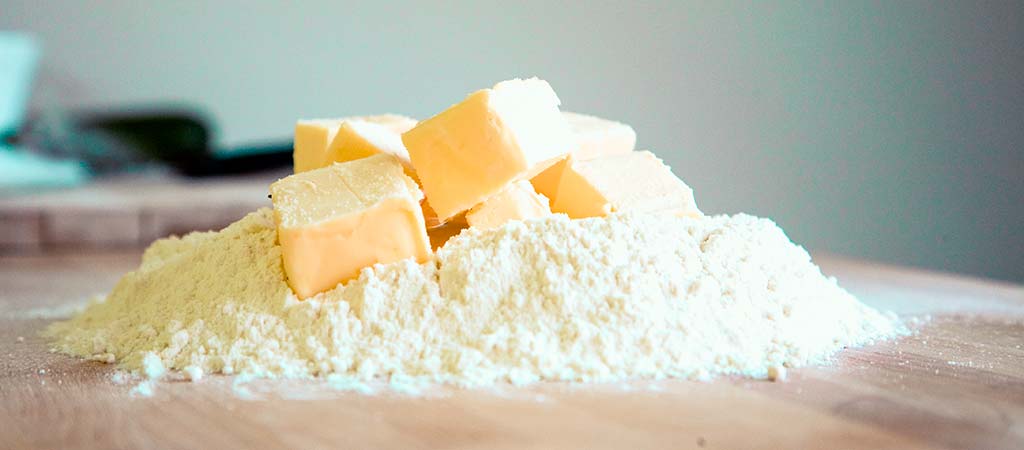Pastry making is notoriously tricky business, but once you understand the science behind the art form, it all starts to make sense. Here are some tips from the upper crust of the patisserie pack to help you level-up your pastry making skills for perfect pies and tremendous tarts, every time.
Keep your cool
There’s an old saying that says cold hands make good pastry. Though it sounds like an old wives’ tale, it’s actually true – and the same goes for your ingredients, bowl and anything else coming into contact with your pastry-in-progress. Run your hands under a cold tap to lower their temperature, and put your pastry bowl, rolling pin and other bits and bobs in the fridge for a few minutes before getting to work.
For shortcrust pastry, cut chilled butter from the fridge into cubes before rubbing into your flour, and for puff pastry, where it’s particularly important to keep your butter solid to prevent it from spilling out and ruining your layers, place the building layers of pastry back in the fridge for a few minutes between each fold to keep them chilled.
It’s all about the shape
Though pastry needs cold temperatures while it’s being made, it needs to come to room temperature to be malleable enough to shape. If it’s too cold, you’ll have to use brute force to roll it out, which will crush the delicate layers and overwork the dough, making it tough and brittle rather than flaky and soft.
Be wary of adding too much flour to the work surface, rolling pin, or your hands – this too is a recipe for dried-out, unpleasant pastry. If the dough while you’re creating your pastry case, don’t be tempted to patch it with another piece. Instead, wet your fingers and push together the torn parts to get a proper join that won’t break apart in the oven.
Once you’ve lined your tin, leave the overhanging edges intact to allow for shrinking or leakage. After baking, you can use a sharp knife to cut them away, resulting in a neat and professional edge.
Fill it up
Your pastry case is one half of a whole, completed by the fillings for your tart, pie or whatever it is that you’re baking. Your pastry can be flavoured to suit the fillings – for example, by replacing some of the flour in the dough with cocoa powder, sugar, or powdered spices, or by adding eggs and extra butter for an enriched dough.
When it’s time to add the fillings, make sure they’re cool before you add them to the pastry – room temperature at a minimum. Add a hot steamy filling to your blind-baked or raw pastry and you’ll find yourself with a soggy bottom.
Cooking to perfection
When you turn your oven on to preheat, place a baking tray on the shelf to warm up too. When your pastry’s ready to bake, place the tin on top of the hot tray to kick-start the cooking process. Always cook pastry in the middle of the oven – this lets the hot air circulate around the whole pastry case and cook it evenly. If the edges are browning more quickly than the rest of the bake, cover them with tin foil to stop them from catching any more.
Blind baking is a big help for preventing soggy bottoms, allowing your pastry to partly cook before adding a moist filling. If you don’t have ceramic baking beads, you can use uncooked rice or copper coins on top of a sheet of baking parchment inside the pastry case.
Finish with a flourish
The first taste of any pie, pastry or tart is taken with the eyes, so decorating your pastry is one of the most important parts of the bake. Find your signature style – whether it’s rustic and homely or perfect and precise.
Crimping is a classic finish and helps to seal the edges of the pie. Always make the crimps slightly deeper than you think they need to be, as they’ll lose a little definition during cooking. However you decorate your pie, finish the whole effect with a wash of beaten egg to glaze the top and give it a glossy, golden finish. If it’s a sweet pie, a dusting of caster sugar adds sweetness and texture to the pastry.
